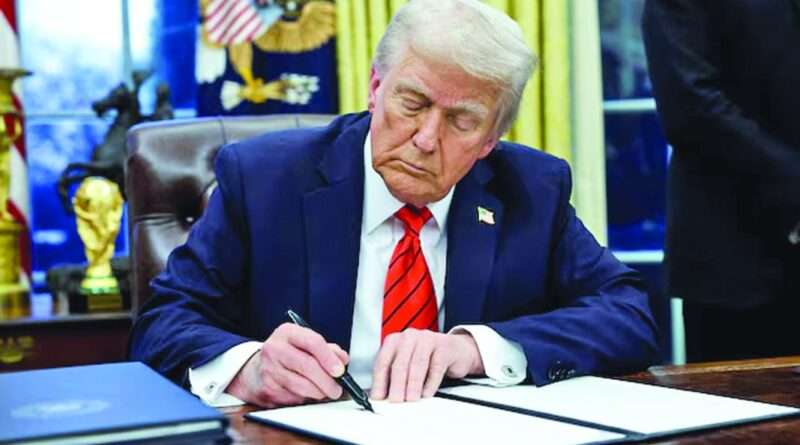Reciprocal Tariffs: A Scattergun Approach and Its Economic Fallout
|
Getting your Trinity Audio player ready...
|
Introduction
The introduction of reciprocal tariffs by former US President Donald Trump was aimed at addressing trade imbalances and promoting fair trade practices. However, this approach, which many consider to be scattergun rather than strategic, has raised concerns about its potential impact on the global economy. From escalating trade wars to increasing inflation and alienating allies, the ramifications of this policy continue to unfold.
Understanding Reciprocal Tariffs
What Are Reciprocal Tariffs?
Reciprocal tariffs refer to duties imposed on imported goods in response to tariffs placed on a country’s exports. Trump’s administration justified these tariffs as a means to restore “fair” trade by ensuring that any country taxing US imports would face an equal countermeasure.
The Justification Behind Trump’s Policy
The rationale behind these tariffs was that they would encourage foreign investment in the United States, reduce trade deficits, and boost domestic manufacturing. The expectation was that companies would shift production back to the US, thus generating jobs and strengthening the economy.
The Global Economic Impact of Reciprocal Tariffs
Impact on US Manufacturers and Consumers
Market analysts argue that these tariffs have had unintended consequences. By increasing costs for imported raw materials, manufacturers in the US have been forced to raise prices, ultimately passing the burden onto consumers. This has led to rising inflation and decreased consumer purchasing power.
Stock Market Volatility
Financial markets have responded negatively to the uncertainty caused by these tariffs. According to Reuters, Wall Street has been on edge due to fears that these trade measures might slow economic growth and force the Federal Reserve to reconsider its monetary policies.
Reactions from US Allies
The response from US allies has been largely negative. Many countries, including those in the European Union, Japan, and South Korea, have expressed discontent, arguing that these tariffs unfairly target them while failing to address larger global trade imbalances.
Case Study: The Steel and Aluminum Tariffs
Implementation and Initial Impact
On February 9, 2018, Trump announced a 25% tariff on steel and a 10% tariff on aluminum imports. This decision, made under the guise of national security concerns, was met with strong opposition from both domestic businesses and international trading partners.
Winners and Losers
While domestic steel producers initially benefited from reduced competition, industries relying on steel, such as automotive and construction, saw increased production costs. In turn, this led to higher prices for consumers, job losses in downstream industries, and retaliatory tariffs from affected countries.
Comparisons with Historical Trade Policies
The Smoot-Hawley Tariff Act
One historical comparison is the Smoot-Hawley Tariff Act of 1930, which imposed high duties on foreign goods. Instead of protecting American jobs, it contributed to the Great Depression by reducing international trade and prompting retaliatory tariffs from other nations.
Lessons from the Past
History has shown that protectionist policies often backfire. Rather than strengthening economies, they can lead to economic downturns by disrupting trade relationships and increasing costs for businesses and consumers.
Challenges and Risks Associated with Reciprocal Tariffs
Inflationary Pressures
As import costs rise due to tariffs, inflation becomes a significant risk. Higher prices on goods such as steel, aluminum, and consumer products can erode the purchasing power of American consumers.
Impact on the Federal Reserve’s Monetary Policy
The Federal Reserve’s ability to adjust interest rates is also affected by tariff-induced inflation. If inflation rises too quickly, the Fed may have to maintain higher interest rates, which can slow economic growth.
Trade Wars and Global Instability
Tariff disputes can escalate into full-fledged trade wars, causing economic instability worldwide. Countries facing high US tariffs often retaliate with their own trade barriers, reducing exports and disrupting global supply chains.
Alternative Approaches to Trade Balancing
Diplomatic Negotiations
Rather than imposing blanket tariffs, trade imbalances can be addressed through diplomatic negotiations and trade agreements. Engaging in constructive dialogue with trading partners can lead to more sustainable solutions.
Investment in Domestic Industries
Instead of relying on tariffs to level the playing field, the US could invest in innovation, education, and infrastructure to enhance competitiveness.
Leveraging International Trade Organizations
Working with organizations like the World Trade Organization (WTO) can help address unfair trade practices through established legal frameworks rather than unilateral tariff measures.
Conclusion
While Trump’s reciprocal tariffs were intended to protect American interests, their unintended consequences have led to economic uncertainties, higher prices for consumers, and strained international relations. A more strategic, diplomatic approach to trade would likely yield better results in the long term.
FAQs
1. How do reciprocal tariffs impact consumers?
Reciprocal tariffs increase the cost of imported goods, leading to higher prices for consumers on everyday products.
2. What industries are most affected by these tariffs?
Industries reliant on imported raw materials, such as automotive, construction, and manufacturing, face the greatest impact due to higher production costs.
3. Have reciprocal tariffs achieved their intended goals?
While they have provided short-term protection for certain industries, they have also led to retaliatory tariffs and economic instability, limiting their overall effectiveness.
4. What are some alternatives to reciprocal tariffs?
Alternatives include diplomatic trade negotiations, investment in domestic industries, and utilizing international trade organizations to address trade disputes.
5. What lessons can be learned from historical tariff policies?
History has shown that protectionist policies often lead to economic downturns, making a balanced approach to trade more effective than blanket tariffs.




